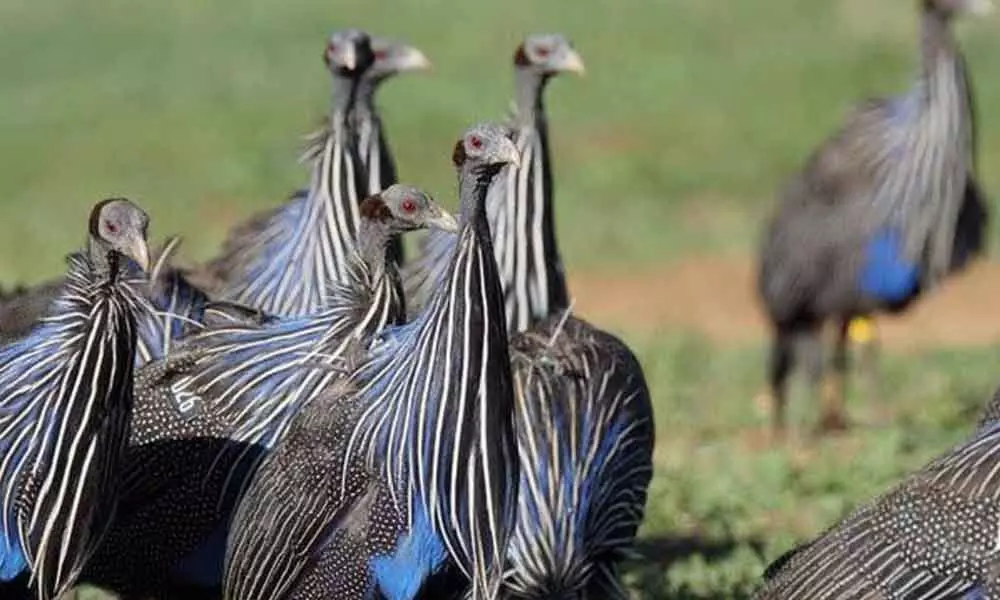Birds may have complex hierarchical societies: Study

Birds can keep track of social associations with hundreds of other individuals, according to a study which raises doubts if large brains are needed to form complex societies.
Birds can keep track of social associations with hundreds of other individuals, according to a study that raises doubts if large brains are needed to form complex societies.
The researchers, including those from the Max Planck Institute of Animal Behavior in Germany, found the existence of a multilevel society in a small-brained bird called the vulturine guineafowl found in parts of Northeast Africa such as Ethiopia and Kenya. The study, published in the journal Current Biology, provides a clue as to how these complex organisations may have evolved. The researchers tracked the social relationships of over 400 adult birds in a field site in Kenya over the course of multiple seasons. They found that the population comprised 18 distinct social groups - with 13 to 65 individuals in each - that remained stable despite regular intermingling with one or more other groups both during the day and at night. According to the researchers, each bird group was associated with the other based on preference, rather than random encounters, and intergroup interactions were more likely to happen during specific seasons and around particular physical features in the environment.
"To our knowledge, this is the first time a social structure like this has been described for birds," said study lead author Danai Papageorgiou from Max Planck Institute of Animal Behavior in Germany. The researchers said that multilevel societies occur when social units, such as pairs of animals, form groups with stable membership, and these groups associate preferentially with specific other groups.
They reasoned that this kind of social organisation requires the animals to keep track of individuals in both their own, and other groups. Such groupings, the researchers said, was believed to exist only in species with the intelligence to cope with this complexity. The study noted that while many bird species live in groups, these were either open, lacking long-term stability, or highly territorial, lacking associations with other groups. But according to the researchers, the vulturine guineafowl represents a contradiction to this since they are from an ancient lineage resembling dinosaurs more than birds.
They behave highly cohesively without exhibiting the signature intergroup aggression commonly seen in other group-living birds, the researchers said. "They seemed to have the right elements to form complex social structures, and yet nothing was known about them," said Papageorgiou.
The guineafowl, the researchers said, has challenged our understanding of how social associations between animals of a species have evolved. "This discovery raises a lot of questions about the mechanisms underlying complex societies and has opened up exciting possibilities of exploring what is it about this bird that has made them evolve a social system that is in many ways more comparable to a primate than to other birds," said study co-author Damien Farine from Max Planck Institute of Animal Behavior.

